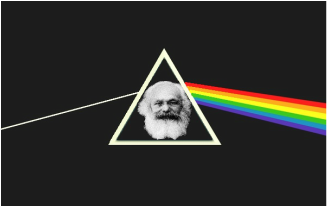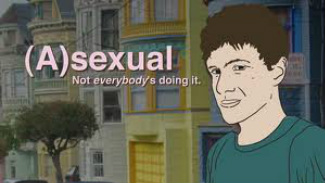 Pink Floyd is useful for teaching sociological theory Pink Floyd is useful for teaching sociological theory
Tags: class, education, foucault, government/the state, inequality, knowledge, marx/marxism, theory, alienation, althusser, gramsci, hegemony, state apparatuses, subtitles/CC, 00 to 05 mins
Year: 1982 Length: 5:13 Access: YouTube Summary: In my Classic Sociological Theory class, I ask students to write a reflective essay on Marxist concepts of alienation (see also here, here, here, here, and here) and class conflict, and then I ask them to relate the concepts to Pink Floyd's "Another Brick in the Wall." It is a common misunderstanding that Marx was solely a materialist who ignored the sphere of ideas. On the contrary, Marx explicitly argued that "the ideas of the rulling class were in every epoch the ruling ideas." To stretch students’ analytical skills I ask and encourage them to also incorporate Althusser’s idea of state apparatuses (repressive and ideological). That is, drawing from the video, what does it mean to say that the state is repressive in order to further the interests of the ruling classes? I then ask students to push their argument even further and incorporate a discussion of Gramsci’s notion of hegemony (see also here, here, and here). Here the question is, how does the bourgeoisie develop a hegemonic culture, wherein its own values and norms become common sense for all? Instructors should feel free to press for a more radical departure from Marx. For instance, it might be fruitful to draw on Foucault to analyze resistance, punishment, and the complex notion of power-knowledge. I remind students that the objective is not to merely summarize the theories and create links between concepts and the video, but to use the video as a springboard for a deeper discussion about resistance and oppression. Submitted by: Hadi Khoshneviss, University of South Florida
11 Comments
 Image by Will Varner Image by Will Varner Tags: corporations, crime/law/deviance, foucault, goffman, government/the state, science/technology, theory, back stage, edward snowden, glenn greenwald, mass surveillance, n.s.a., panopticon, surveillance state, 00 to 05 mins, 11 to 20 mins, 21 to 60 mins Year: clip 1: 2013 | clip 2: 2014 Length: clip 1: 20:41 | clip 2: 5:38 Access: YouTube: clip 1: TED Talks clip 2: New York Times Summary: Taken together, the above two clips make three distinct points about why we should all take the unfolding revelations about N.S.A. surveillance very seriously, and the clips can be used to kick off a sociologically-informed discussion about the surveillance state and it's practice of mass surveillance. 1) In the first clip, journalist Glenn Greenwald delivers a TED Talk where he argues against the claim that only criminals have something to hide. People should take the N.S.A. revelations seriously because everyone has something to hide, even those of us who believe ourselves to be innocent of all crimes. After all, people routinely lock their bathroom doors and use passwords to access their email. To borrow a page from sociologist Erving Goffman, people all have a back stage. 2) In the second clip, journalist David Sirota argues we should take state surveillance seriously because the fact is, we are all criminals. That is, there are so many statutes on the books that virtually anyone could be found guilty of a crime. Chances are that even those who loudly profess they have nothing to hide have unknowingly committed crimes, and as the amount of data being collected and saved increases, the state stores aways more and more opportunities to charge any given citizen of a crime should it prove politically expedient to do so. 3) Finally, Greenwald alludes to a long standing observation in sociology that surveillance changes people; it controls them, even if charges of a crime never materialize and no formal interaction with the criminal justice system occurs. People drastically, if unknowingly, alter their behavior when they suspect they are being watched. No where is this reality more vividly illustrated than in what philosopher Jeremy Bentham described as a panopticon, a prison tower that offers a vantage point from which a guard can see all prisoners in their cells, but does not offer any single prisoner the ability to know whether he or she is being observed. Bentham imagined it as a means of controlling prisoners, but subsequent thinkers—namely Michel Foucault—have used the idea of a panopticon as a metaphor to describe the distinct way in which modern states exercise power and control. The prison tower is now the speed camera inconspicuously perched atop a traffic light; it's also the tablet that tracks it's user's browsing history. This architecture, which claims to exist for the purpose of reducing criminal behavior, is already also changing non-criminal behavior as well. Consider the journalistic practice of offering sources anonymity. As the surveillance state becomes ever more bold, the ability to promise such anonymity slips away, and some would argue, so too does an important check on government power (Note: The Sociological Cinema has explored the topic of the surveillance state here, here, and here, and we maintain a Pinterest board on the topic). Submitted By: Lester Andrist  Doubt shapes discourses of science and power. Doubt shapes discourses of science and power. Tags: discourse/language, environment, foucault, health/medicine, knowledge, science/technology, social construction, climate change, creationism, evolution, tobacco, 00 to 05 mins Year: 2012 Length: 5:12 Access: YouTube Summary: This video from The Climate Reality Project entitled "Doubt" illustrates how knowledge and power are tightly interwoven. Using two case studies—the "tobacco is good for you campaign" and the "climate change denial movement"—the clip depicts how science can be used as a mechanism of legitimation by powerful others in ways that best serves status quo interests. Michel Foucault discussed this phenomenon in his extensive work on how the discourse of science (and knowledge) is also a discourse of power. As illustrated in the video, despite the scientific evidence showing tobacco's deadly effects and climate change's dangerous outcomes, powerful interests suppressed this knowledge by introducing doubt into the discourse around tobacco use and climate change, which they backed up using a discourse of science. These powerful interests created the illusion that a scientific debate was taking place when, in reality, there wasn't. An iteration of this phenomenon recently unfolded in the media-hyped debate between Bill "the Science Guy" Nye and creationist Ken Ham. Here, the case of evolution was presented as a scientific debate, thereby suggesting that a lack of consensus surrounds the scientific evidence around evolution. This tactic of using a discourse of science to create the illusion of uncertainty around evolution was echoed by Michael Schulson in his article for The Daily Beast, in which he writes: "Ham’s argument, essentially, was that there are two kinds of science—observational, concerned-only-with-what-we-can-touch-and-see science, on which, Ham said, we all happily agree; and historical science, on which we don’t. This is bullshit, of course. We can use evidence from the present to extrapolate about the past." Yet, like the case of tobacco and climate change, by creating doubt about the earth's origins, the public's access to scientific knowledge is suppressed. This video would complement a discussion around the sociology of knowledge, science, and power, and would pair well with portions of the This American Life radio episode, "Fake Science," and with sociologist Zuleyka Zevallos's article, "The Sociology of Why People Don’t Believe Science." Viewers can be encouraged to think about: Whose interests are served in each of the fake science cases of tobacco, climate change, and evolution? What is the role of the media in perpetuating fake science? How has fake science shaped social policy? Other videos from The Climate Change Project can be found here. Submitted By: Valerie Chepp  Drones will be big business, but raise privacy concerns. Drones will be big business, but raise privacy concerns. Tags: crime/law/deviance, foucault, government/the state, science/technology, theory, war/military, drones, panopticon, surveillance, unmanned aerial vehicles, 00 to 05 mins Year: 2013 Length: 4:41 Access: New York Times Summary: Unmanned aerial vehicles (UAVs), or drones, are the "future of aviation." The Federal Aviation Administration (FAA), which regulates the use of drones and currently limits the commercial use of drones in the US, is likely to loosen this restriction by 2015 and private industry is positioning itself for a commercial boom in drones. And while the US government has mostly used drones for surveillance and combat in the war on terror, the government has weighed the use of drones for surveilling its own citizens. As noted by the NYT, Senator Patrick Leahy, a Vermont Democrat and chairman of the Senate Judiciary Committee, said this year: “This fast-emerging technology is cheap and could pose a significant threat to the privacy and civil liberties of millions of Americans. It is another example of a fast-changing policy area on which we need to focus to make sure that modern technology is not used to erode Americans’ right to privacy.” From a Foucauldian perspective, the possibility of widespread drone surveillance could be the new Panopticon. In particular, inexpensive drones (<$1000) allow for continuous video footage, facilitating the proliferation of micro-power as individuals, corporations, and government observe others throughout all of society. Furthermore, it is likely to spread throughout a variety of institutions, enabling the use of drone surveillance in search-and-rescue missions, agricultural surveillance, and countless other personal and commercial applications. While Foucault offered the metaphor of surveillance technologies as swarming throughout society, drones offer a very literal extension of this expanding technology. Submitted By: Paul Dean  This scene emphasizes the importance of consent. This scene emphasizes the importance of consent. Tags: children/youth, foucault, gender, sex/sexuality, theory, violence, rape, sexual consent, sexual violence, subtitles/CC, 11 to 20 mins Year: 2011 Length: 20:00 Access: Fáðu já (English subtitles available) Summary: [Trigger Warning: This film includes scenes depicting and discussing rape and sexual violence.] Fáðu Já! (“Get a Yes!”) is an educational film from Iceland on sexual consent. The film functions on two levels: 1) it analyzes, and is a good way to initiate discussions on, sexual relationships and violence; and 2) it offers an illustration about cultural differences in the public discourse about sex education and sexual violence. First, sometimes with humor and sometimes with sobering seriousness, the film addresses a number of issues about sexual relationships and is aimed at teenagers. Topics include: the dangers of learning about sex from porn or music videos; the fundamental importance of getting consent from one's sexual partner; acknowledgement of the positive dimensions and frequent awkwardness of sexual activity; knowing sexual boundaries; the definition of rape; and the prevalence and dangers of sexual violence. Second, the film is an interesting illustration of cultural differences around public discourses of sex. Many viewers (especially American viewers) may be surprised to know that this film was shown to teenagers in all schools across Iceland on January 30th, 2013. As noted in this review, the film "is part of a government-sponsored awareness initiative that is focused on violent crimes of a sexual nature against children." It had the support of Iceland's Ministry of Education, Ministry of Welfare, and the Ministry Internal Affairs, with the purpose of developing "preventative material regarding sexual violence." According to an interview with one of the film's creators, "The response was overwhelming. The project got a whole lot of media attention and was featured on pretty much every talk show in the country. The reporters and journalists ... all interviewed us, more or less. The reviews were extremely positive and I barely heard any negative feedback. Some of the older, ‘cooler’ teenagers said that it was obviously made for the younger kids – but we think the film is for everyone who has ever reached puberty." Finally, the video is theoretically interesting from the perspective of Foucault, who in The History of Sexuality (1978), links discourses of sexuality to power. On the one hand, the video was shaped by official ministries and is tied to expert knowledge, and it clearly links positive sexual activity to relationships of love. On the other hand, and contrary to discourses that shame adolescent sexuality or characterize it as unnatural (Foucault 1978: 104), the video acknowledges its positive dimensions. The video also does not explicitly define acceptable forms of sexuality (at least not beyond consensual sex associated with love), thereby partially decentering this conversation by encouraging viewers to know and create their own boundaries. Furthermore, from a feminist perspective, the film can be seen as empowering victims of sexual assault. (Note: when showing this video in the US, instructors may want to provide the National Sexual Assault Hotline, 1.800.656.HOPE) Submitted By: Anonymous  George receives a massage from a man Tags: emotion/desire, foucault, lgbtq, sex/sexuality, 00 to 05 mins Length: 1:57 Year: 1991 Access: YouTube Summary: This clip is from the Seinfeld episode entitled "The Note," which is the first episode of the show's third season (note: the audio is low; turn up the volume when screening this clip). After receiving a massage from a man, George shows up at Jerry's apartment, clearly distraught. George reveals to Jerry that he thinks he might have had an erection during the massage and he fearfully exclaims: "That's the sign! The test…if a man makes it move." Jerry reassures George saying, "That's not the test. Contact is the test. If it moves as a result of contact." This clip can be used to teach several concepts. First, the clip can be use to illustrate how sexuality is not a fixed concept; it is fluid and not easily defined. For example, is sexuality defined by sexual desire? Sexual behavior? Sexual identity? In this case, George focuses on sexual desire. Despite not identifying as gay or engaging in sexual behavior with men, George wonders if his erection is a sign of same-sex desire, a desire presumably unbeknownst to him. Jerry shifts the focus by narrowing in on behavior, stating that the sign of gay entails physical contact that results in sexual arousal. This discussion points to the complexity of sexuality. Viewers can be encouraged to consider various scenarios in order to highlight this complexity. For example, if George dates women, has sex with women, self-identifies as straight, yet is aroused by a man, is he gay? What if he identifies as gay but has sex with women? Viewers can further be encouraged to question our cultural obsession with defining sexuality in the first place. In his book The History of Sexuality, Michel Foucault calls this a discourse of knowledge and, similarly, power. The clip also illustrates how heterosexuality gets renormalized in our culture through social interactions—that is, there is no need for George and Jerry to debate the definition of being straight. Presumably, that's just known and normal. Finally, the clip also supports elements of Michael Kimmel's concept of masculinity as homophobia, or the notion that men are terrified to be gay or, even more, be perceived as gay. Submitted By: Valerie Chepp  Tags: emotion/desire, foucault, lgbtq, sex/sexuality, theory, abjection, asexuality, heterosexuality, masculinity, 06 to 10 mins Year: 2006 Length: 6:44 Access: YouTube Summary: A common assumption about sexuality is that all humans have sexual desire, which suggests that sexual identity is biological or innate (e.g. see Foucault 1978; Planned Parenthood). However, in this interview with Tucker Carlson, asexual activist David Jay broadens the discourse on sexual orientation by bringing asexuality to the forefront of the discussion. In short, an asexual person is defined as someone who does not experience sexual attraction. Through his interview with Carlson, Jay challenges the commonly held belief that all humans are sexual beings, and effectively creates a dialogue for viewers to rethink taken-for-granted assumptions about male-dominated heterosexuality. Questions to ask while watching this video include: How does Tucker Carlson define sexuality in patriarchal terms? How is his definition of a heterosexual male limited? How does David blur the dichotomous lines of gay and straight? Can we understand sexuality on a spectrum instead of as mutually exclusive? Why is Tucker pressuring David to “try” sex? Is this Tucker’s attempt to make David an intelligible body? Why is it so important to Tucker that David perform his sexuality “properly”? How does Tucker abject David and the concept of asexuality? Why is the concept of asexuality so problematic for Tucker? Julia Kristeva’s (1982) theory of abjection may serve as a useful concept to frame discussions around this video. The abject is defined as “the other” or as “the human reaction […] to a threatened breakdown in meaning caused by the loss of the distinction between the subject and object or between the self and the other.” We fear and loathe the abject because they are threatening to the social order and ultimately to conceptions of our self. Considering this, another question to ask is whether or not asexual relationships threaten heterosexual masculinity. The discussion of asexuality challenges naturalized conceptions about human sexuality and paves the way for the exploration of other forms of intimacy, sexual orientations and partnerships. It is only when we let go of normative prescriptions of sexuality that we can experience and recognize other forms of love and expression. Submitted By: Pat Louie  Tags: children/youth, foucault, war/military, government/the state, race/ethnicity, theory, biopolitics, biopower, governmentality, microphysics, subtitles/CC, 11 to 20 mins Year: 2011 Length: 14:34 Access: YouTube Summary: This clip is from the History Channel documentary, Third Reich: Rise & Fall, and features rare footage of the Hitler Youth Brigade. Examining the girl's division, the film's narrator explains that these Hitler Maidens from Nazi Germany were taught from a young age that it was their duty to breed and nurture new generations of Aryan youth. The clip might be a useful way for stimulating discussion about what Michel Foucault meant by governmentality. As sociologist Thomas Lemke summarizes, the concept suggests "a view on power beyond a perspective that centers either on consensus or on violence; it links technologies of the self with technologies of domination, the constitution of the subject to the formation of the state." From this Foucauldian perspective, one can see in the clip how the young girls were constituted as good Nazis. Strictly speaking, their political compliance and enthusiasm to "breed" for the Führer cannot be explained as due to simple coercion or consent. For Foucault, the state, and the individuals the state is said to govern, codetermine each other. At about 10:00, a "Hitler Maiden" writes about how most of the girls in the youth camp became pregnant during the summer. Upon learning of her daughter's pregnancy, a mother rushed to the camp and attempted to discipline her daughter, but the daughter responded by telling her mother to leave the camp, or else she would report her mother to the authorities for "sabotaging German motherhood." This section of the clip could be drawn on to underscore Foucault's theory of the “microphysics of power” and “the gaze,” which Foucault described as swarming through society and entering into the minds and consciousness of the people. Submitted By: Raul Barboza  Tags: foucault, knowledge, lgbtq, sex/sexuality, theory, asexuality, identity politics, queer theory, wilchins, 00 to 05 mins Year: 2010 Length: 3:48 Access: Kickstarter.com Summary: This is a promotional clip intended to raise money to complete a documentary film about asexuality. The clip's description explains that while the asexuality movement was inspired by the LGBT movement of the 1960s, some members of the asexual community are hesitant about being a part of the broader LGBT community. The filmaker poses the question: Can asexuals--members of a group who have rejected sex--be members of the sex-positive pride march? This clip might be useful in a class on the sociology of sexuality or gender, as it wrestles very directly with the topic of identity politics. The clip might also work well as an accompaniment to Foucault's The History of Sexuality or Wilchins' excellent primer, Queer Theory, Gender Theory. Using this clip, one could ask students to reflect on the way sexual identities, which scarcely existed 200 years ago, are now a primary means by which people politically organize themselves. The clip would work well with another short promotional film called "The Bi-deology Project," which similarly argues that bisexuality is an identity that needs to be recognized. Submitted By: Lester Andrist  Tags: foucault, surveillance, panopticon, 1984, orwell, big brother, police, crime, disciplinary society, privacy, 00 to 05 mins Year: 2008 Length: 4:51 Access: YouTube Summary: This is a student-made video that explores the Panopticon. It includes contemporary examples such as security cameras, the Patriot Act, and social networking sites; brief commentary on Jeremy Bentham and his original Panopticon; and theoretical discussion of Foucault. Submitted By: Paul Dean |
Tags
All
.
Got any videos?
Are you finding useful videos for your classes? Do you have good videos you use in your own classes? Please consider submitting your videos here and helping us build our database!
|
 RSS Feed
RSS Feed
